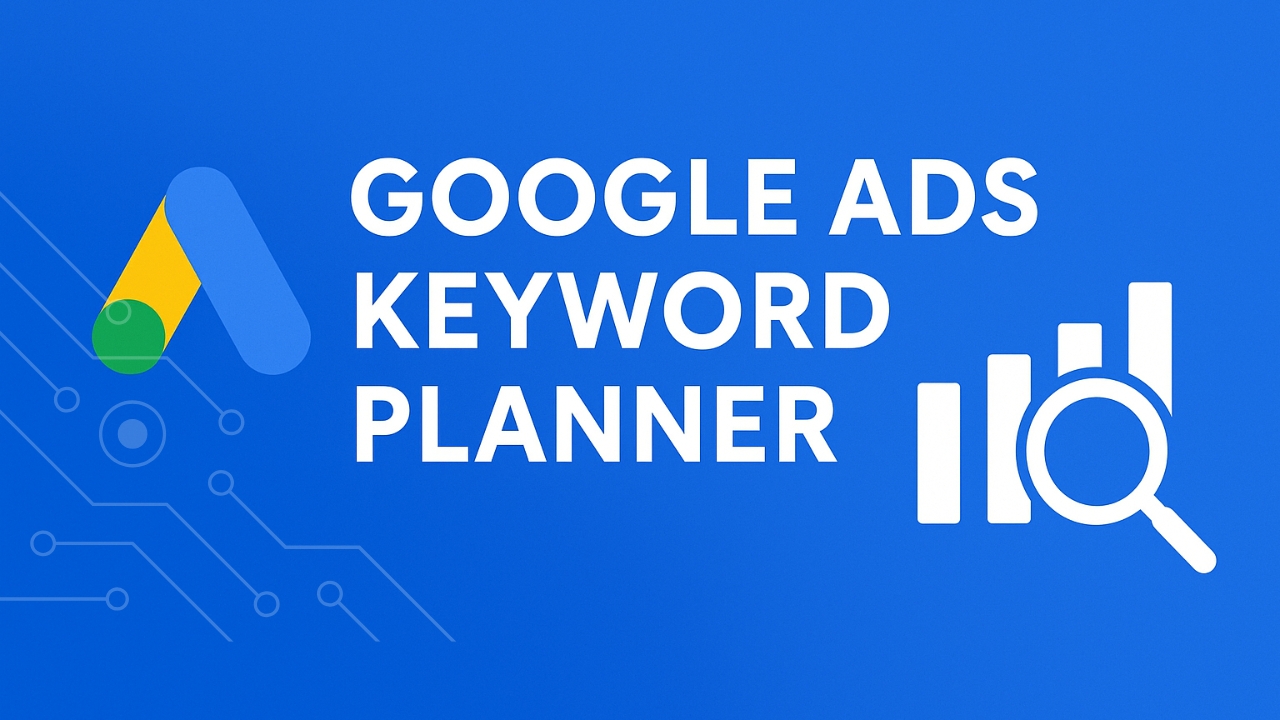If you’re diving into the world of digital marketing—whether you’re running your first campaign or helping a client find the right audience—one tool that deserves your attention is the Google Ads Keyword Planner. It’s not flashy. It’s not complicated. But when used right, it can be a game-changer for your SEO and PPC efforts.
Let’s break it down like a real conversation between marketers who’ve been through the trenches—because I’ve been there. I’ve stumbled, tested, and finally learned how to really squeeze the value out of this tool.
So, What Is Google Ads Keyword Planner?
In plain English, it’s Google’s free tool that helps you research keywords. But don’t let the word “free” make you underestimate it. Google Ads Keyword Planner lets you discover what your audience is typing into search engines—and how competitive those terms are in the advertising landscape.
You can use it to:
- Find keyword ideas
- Get average monthly search volumes
- See competition levels
- Estimate cost-per-click (CPC)
- Plan campaigns that are grounded in real-world data
And the best part? You don’t have to be running a paid ad campaign to access it (although you do need a Google Ads account).
My First Encounter With Keyword Planner
I’ll be honest. When I first opened the Google Ads Keyword Planner, I was overwhelmed. All those filters, tabs, and metrics felt like reading tax documents. But with a little patience—and a few YouTube tutorials—I got the hang of it.
Instead of guessing which keywords to target in my blog posts or ad campaigns, I could let real data guide me. That changed everything.
Getting Started: How to Access Google Ads Keyword Planner
- Create a Google Ads Account
- You’ll need to sign up at ads.google.com. During setup, it may ask you to start a campaign. Just click “Switch to Expert Mode” and then choose “Create an account without a campaign.” Easy.
- Navigate to Tools & Settings > Planning > Keyword Planner
- You’ll see two main options:
- Discover New Keywords
- Get Search Volume and Forecasts
Start with “Discover New Keywords.” That’s where the fun begins.
Finding the Right Keywords (Real Talk)
This isn’t just about picking the most searched terms. You want relevant keywords with a good balance of search volume and competition. Here’s what I typically do:
- Enter a broad topic (like “vegan skincare”)
- Use filters to narrow down by location or language
- Sort the list by search volume and note down ones that are relevant to your product/service
- Pay attention to keyword intent. Is the user just browsing or ready to buy?
For example, “best vegan moisturizer” is likely to convert better than just “vegan skincare” because it suggests someone’s about to make a purchase.
Keyword Planner for Content Creation
I don’t just use Google Ads Keyword Planner for paid ads. It’s also part of my content strategy toolkit.
Let’s say I’m writing a blog post about “how to start a podcast.” I’ll plug in that phrase and find related queries like:
- “Best podcast equipment for beginners”
- “How to publish a podcast.”
- “Podcast hosting sites”
These nuggets help me structure my content around what people are searching for, making it more likely to rank well on Google.
Forecasts: Not Just for Ads
The other side of the tool, “Get Search Volume and Forecasts,” is particularly helpful if you’re planning a campaign. You’ll get insights like:
- Expected impressions and clicks
- Predicted CPC ranges
- Budget estimates
Let’s say you’ve got $500 to run a Google Ads campaign. Plug in your keywords, and Google will estimate how much reach you can expect for that budget.
That’s huge when you’re trying to get buy-in from a client or plan for ROI.
Expert Tips from Personal Experience
- Use long-tail keywords: These are longer, more specific keyword phrases. They may have a lower search volume, but often convert better. Example: “Best DSLR camera under $1000 with Wi-Fi.”
- Don’t obsess over high-volume keywords: Just because a keyword gets 100k searches/month doesn’t mean it’s right for your niche. Focus on relevance and user intent.
- Group similar keywords into ad groups or blog post themes to create tight, focused content or campaigns.
- Update regularly: Search trends change. A keyword that works now might lose steam in six months.
Common Mistakes to Avoid
- Ignoring negative keywords: If you’re running ads, use negative keywords to avoid wasting the budget on irrelevant clicks.
- Relying only on broad matches: Broad matches can trigger your ad for unrelated terms, especially in ads. Use phrases or exact matches to maintain relevance.
- Skipping local filters: If you’re a local business, always set location preferences so you can target users in the right areas.
Conclusion:
Absolutely. Whether crafting blog content or launching an ad campaign, Google Ads Keyword Planner is one of the most valuable (and underutilized) tools in your digital marketing arsenal.
It gives you hard data to base your decisions on, helps you understand what your audience is searching for, and lets you build a strategy grounded in what actually works, not just gut feelings.
If you’re serious about showing up in search results or maximizing your ad spend, don’t skip this tool. Could you get familiar with it? Tweak your strategy with it. And watch how it transforms your campaigns from average to strategic.

